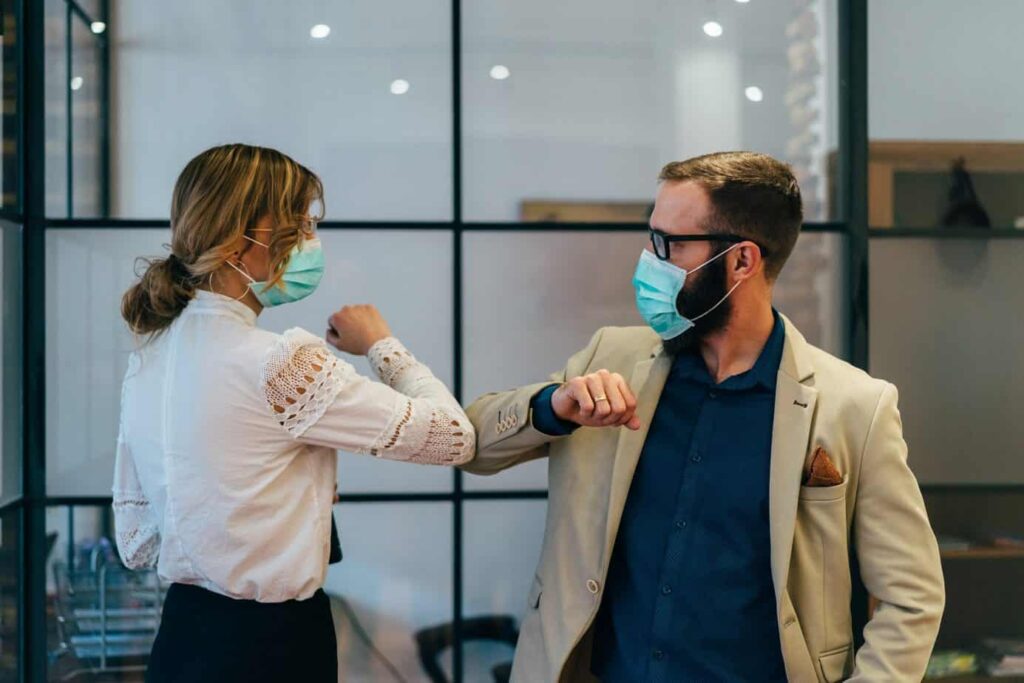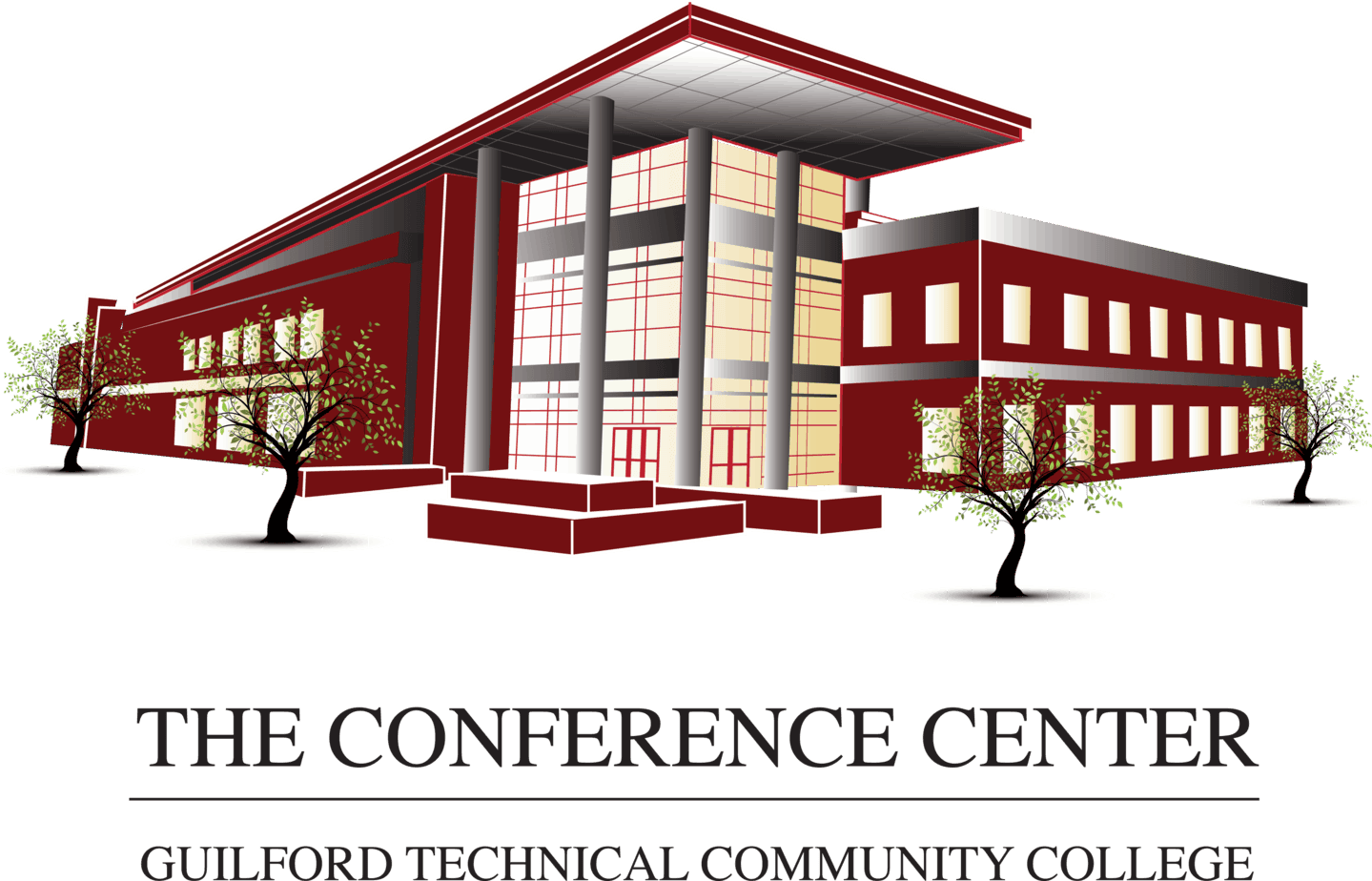
We all wonder what our world will look like once the pandemic is over. Without question, things will be different, but how different and in what ways? With all we have experienced in recent months, there is a high likelihood that people will still take measures in the future to protect themselves from a resurgence of COVID-19 as well as other viruses or diseases that may be problematic. For those of us in the event planning and hosting space, we think about what conferences and events will look like post COVID-19.
While nobody has a crystal ball, we realize we need to shift our thinking and planning for the future to give participants the peace of mind they are in a safe environment while having a great experience. The way an event space is set up can make all the difference in this happening. Here are a few of our ideas for the future of space planning for events.
Health screening area
There is a good chance that health screenings will remain a good idea for the foreseeable future. With that in mind, your space planning should include an area reserved for screening event participants before they enter the registration area. It would be ideal to have a tent set up outside the conference center or meeting space with a certified health professional so you can prevent anyone with a fever or symptoms of being unwell from ever entering the building. Mark intervals of six feet in front of the tent to remind people of social distancing. It is also a good idea to give people assigned times to check in so there will not be a long line and people wanting to congregate.
Check in area
Set up the check-in area so it is spaced out with several people checking in participants. Create a contactless check-in experience by sending participants an electronic ticket with a QR code once their registration is complete. When participants arrive, the check-in person can scan the code on their phone. If there are materials to distribute to participants upon arrival, consider having them placed at an assigned seat or well-spaced out along a long counter or multiple tables for easy pick up. Consider including items in the bags to keep participants safe like masks, gloves, hand sanitizer and disinfectant wipes. These items will send a signal to participants that you are thinking about their safety and well-being. These items are also good branding opportunities for the sponsoring organization or trade sponsors.
Main meeting room
The main meeting room for events will look different in the future. Seating should be spaced six feet apart and there should be more than adequate room allotted for aisles as well as entrances and exits. Have one or two sets of doors reserved for entering the space and one or two sets of doors reserved for exiting the space. Have egress and ingress arrows marked in tape on the floors. An ideal option for seating is to have an individual desk in front of each chair so participants can have a workspace and space to enjoy lunch or catch up on emails during breaks. This option may also include a plexiglass partition placed on top of the desk, giving participants a safe, enclosed space while listening to programs. If you have a smaller number of participants, consider arranging chairs/desks in a large horseshoe shape so everyone is forward-facing. If possible, have power connections available at each desk so a communal charging area is not necessary. If the only option is to arrange the room with large tables and chairs, reduce the number of seating by half at each table and make sure no materials like notepads, sticky notes, pens, markers, etc. are shared.
Breakout session areas
The same rule of spacing all seating six feet apart should apply for breakout sessions as well. If this is not possible when considering the number of participants in each session, consider having participants stay in their assigned seat in the main meeting space and have them attend the session virtually while the speaker is in another location in the building. Another option is to have some breakout sessions outside where distancing may be easier and more comfortable.
Refreshment areas
For large groups of attendees, it is a good idea to stagger break periods via colored dots, last names, group number or another way to easily allow for small groups to get snacks, go to the restroom and stretch for a bit. Have packaged snacks and bottled beverages spaced out on tables. Coffee and hot water for tea could already be in cups with lids on tables for easy retrieval. Have multiple locations for refreshments so fewer people will be at a table at one time. Consider having a cooler by each participant’s chair in the main meeting area already stocked with drinks and snacks. Coolers are also another branding opportunity and an item the participant can take home at the conclusion of the event. For meals, consider boxed lunches or dinners that are already in the personal coolers or easily picked up on a long surface area. For a more formal event, serve plated meals with a covering and make sure servers wear masks and gloves. Package utensils and napkins so participants know they are sanitary. Make sure drinks are covered as well when they are brought to the table.
Sanitation areas and restrooms
It is important that you not only tell but show participants that you are hyper focused on cleanliness and sanitation. Have tables set up all around the meeting space with hand sanitizer, tissues and disinfectant wipes. Make sure there are waste receptacles beside each station. Mark sections on the floor with tape indicating intervals of six feet to remind people how far to stand from each other while waiting to get materials from the tables. Have attendants with masks and gloves in restrooms to clean each stall and sink area after use. Allow a limited number of people in the restrooms at a time.
General
Consider treating carpets, surfaces and furnishings with antimicrobial materials to give participants an added layer of comfort. Prepare signage to place around the event space reminding them of steps to take to stay safe as well as the measures you have taken to create a clean, safe environment. Make sure you have plenty of screens for participants to see presenters or materials without inviting a lot of movement around the space during programs. Consider having the event live streamed so participants can also view in real time on their electronic devices.As always, the goal for meeting planners should be to create the best possible experience for attendees. While this goal may be more challenging with the added layers of attention to health and well-being influenced by the pandemic, know that it is still achievable. In time, participants will adapt to event spaces having a different look. They will soon view it as the “new normal,” and keep the focus on the helpful information and wonderful experience created by the host planners.
